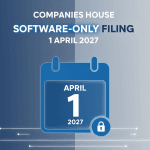
Cash vs Accrual Accounting for E-commerce: Which Method Fits Your Store?
September 11, 2025
From 1 April 2027: Companies House software-only filing — what to do now
September 25, 2025UK Data (Use and Access) Act 2025 is reshaping privacy rules in practical ways that can cut admin and risk for SMEs and accounting firms. Below, we explain what changed, why it matters, and the quick wins you can act on now.
What the UK Data (Use and Access) Act 2025 changes (and how it helps)
1) DSARs: clearer standards and less churn
The Act clarifies that responding to a data subject access request (DSAR) requires a reasonable and proportionate search, and it introduces a “stop-the-clock” rule when you need the requester to clarify their identity or scope. In practice, this reduces wild goose chases and gives your team firmer timelines.
- Why it helps accountants: DSARs tied to payroll, bookkeeping or outsourced finance can be scoped and triaged faster, lowering internal costs.
- Action: Update your DSAR playbook and templates; add a standard clarification step and a log to pause/resume timeframes.
2) Cookies & PECR: less friction for low-risk analytics
Consent is no longer required for certain low-risk uses like first-party analytics and preference cookies (with transparency and opt-out). That means cleaner user journeys and better insight without hurting trust.
- Why it helps: Marketing and site optimisation become simpler—no more “all-or-nothing” banners for basic stats.
- Action: Review your cookie banner and policy; move basic analytics into the new exemption, keep advertising cookies consent-based.
3) Automated decision-making (ADM): more flexibility, still with safeguards
The Act replaces the old Article 22 regime with a clearer, more permissive framework (Articles 22A–22D). You can rely on the full set of lawful bases for significant automated decisions—as long as you apply required safeguards (like the right to human review).
- Why it helps: If you use automated risk flags, credit/risk scoring or onboarding checks, there’s now a cleaner legal route with defined guardrails.
- Action: Map any automated decisions; add human-review pathways and notice wording to your privacy information.
4) International transfers: a clearer test
For data exports, the new statutory “not materially lower” protection test clarifies how you assess risk and document transfer decisions. Expect updated templates and guidance.
- Why it helps: Smoother decision-making for cloud tools and cross-border bookkeeping/payroll platforms.
- Action: Refresh your transfer risk assessment; align vendor due diligence with the new test.
5) Recognised legitimate interests (RLI): faster decisions in specific public-interest scenarios
The Act introduces a short list of recognised legitimate interests (e.g., emergencies, crime prevention, safeguarding) where no balancing test is required. Day-to-day marketing still typically relies on “legitimate interests” with a balancing test—this list is mainly for specific public-interest uses.
What to do this quarter
- Update your DSAR SOPs (playbook, tracker, “stop-the-clock” template, proportionate search standard).
- Re-tune your cookie banner & policy to place first-party analytics in the new exemption; maintain consent for ads.
- Review ADM use cases (credit checks, client onboarding signals); add human-review routes and notices.
- Refresh transfer assessments for cloud/accounting apps against the “not materially lower” standard.
- Stand up a complaints process so clients can raise data rights concerns with you before going to the regulator.
Why this matters now
With commencement dates rolling out and EU-UK adequacy renewal in flight, aligning early keeps data flowing, reduces rework, and demonstrates robust governance to clients and auditors. If you’d like help, our team can run a light-touch compliance tune-up in under a day.
Bottom line: The UK Data (Use and Access) Act 2025 makes privacy compliance more predictable. Used well, it frees your finance team to focus on growth.

